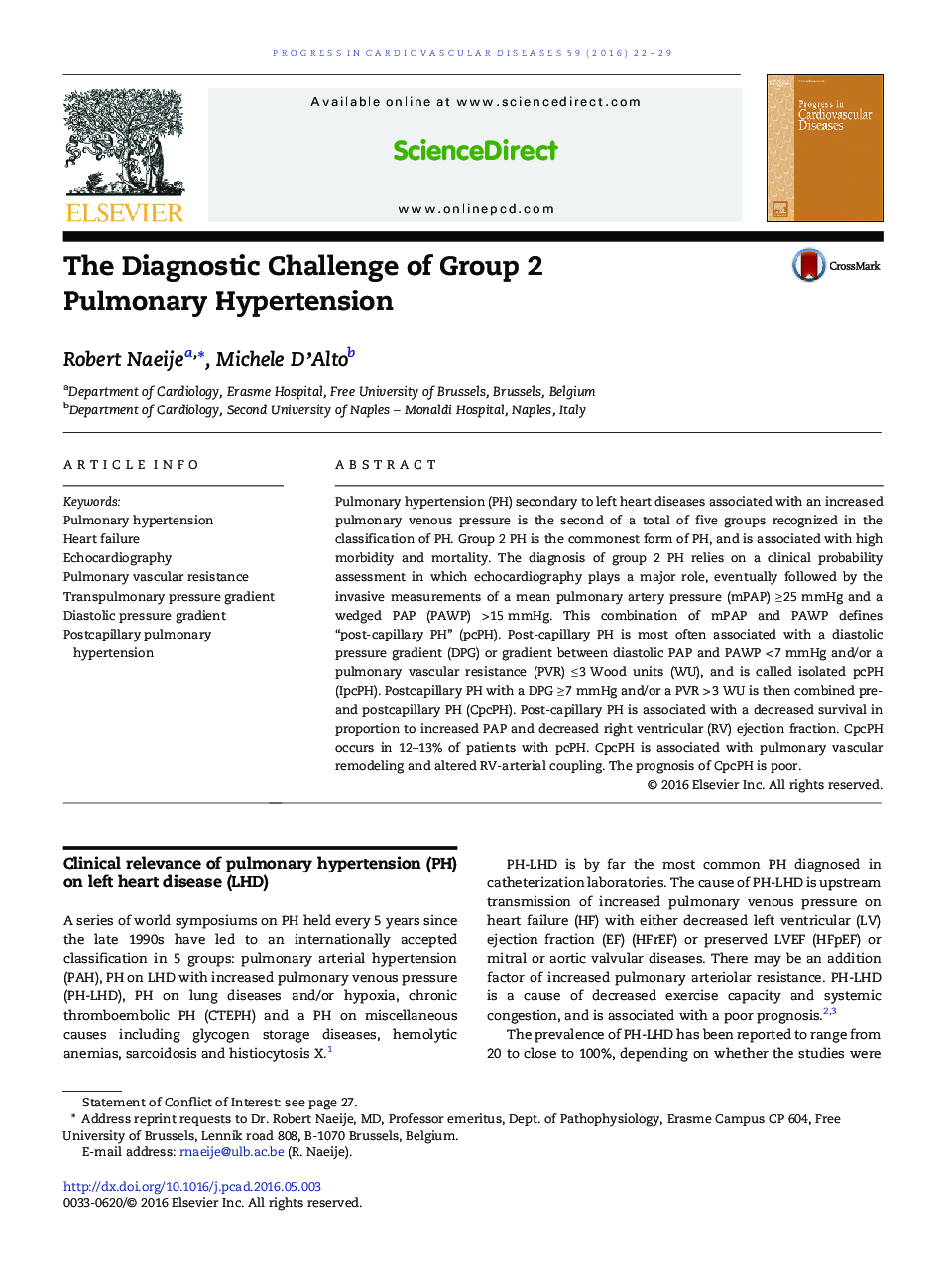| کد مقاله | کد نشریه | سال انتشار | مقاله انگلیسی | نسخه تمام متن |
|---|---|---|---|---|
| 5619660 | 1406080 | 2016 | 8 صفحه PDF | دانلود رایگان |
Pulmonary hypertension (PH) secondary to left heart diseases associated with an increased pulmonary venous pressure is the second of a total of five groups recognized in the classification of PH. Group 2 PH is the commonest form of PH, and is associated with high morbidity and mortality. The diagnosis of group 2 PH relies on a clinical probability assessment in which echocardiography plays a major role, eventually followed by the invasive measurements of a mean pulmonary artery pressure (mPAP) â¥Â 25 mmHg and a wedged PAP (PAWP) > 15 mmHg. This combination of mPAP and PAWP defines “post-capillary PH” (pcPH). Post-capillary PH is most often associated with a diastolic pressure gradient (DPG) or gradient between diastolic PAP and PAWP < 7 mmHg and/or a pulmonary vascular resistance (PVR) â¤Â 3 Wood units (WU), and is called isolated pcPH (IpcPH). Postcapillary PH with a DPG â¥Â 7 mmHg and/or a PVR > 3 WU is then combined pre- and postcapillary PH (CpcPH). Post-capillary PH is associated with a decreased survival in proportion to increased PAP and decreased right ventricular (RV) ejection fraction. CpcPH occurs in 12-13% of patients with pcPH. CpcPH is associated with pulmonary vascular remodeling and altered RV-arterial coupling. The prognosis of CpcPH is poor.
Journal: Progress in Cardiovascular Diseases - Volume 59, Issue 1, JulyâAugust 2016, Pages 22-29
